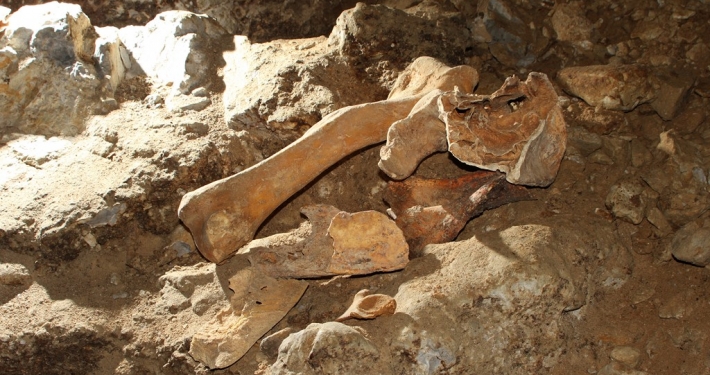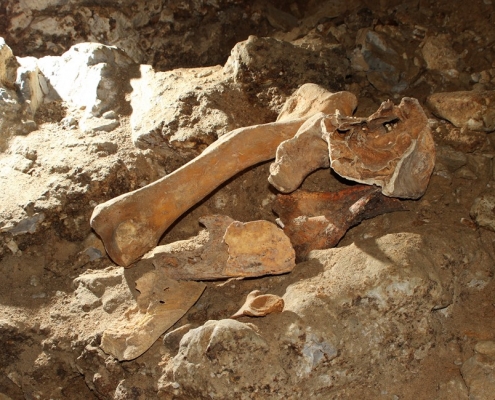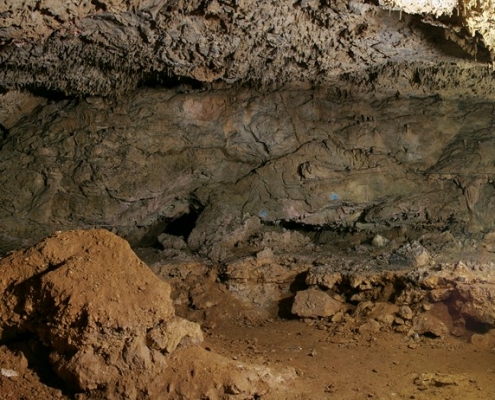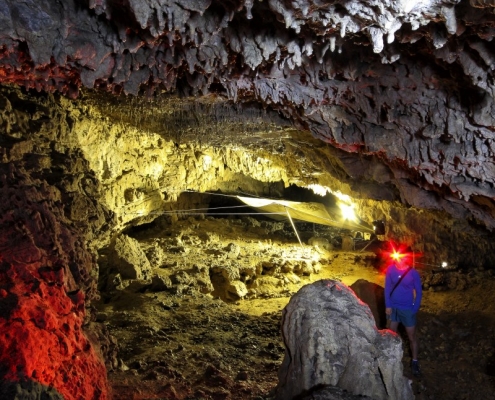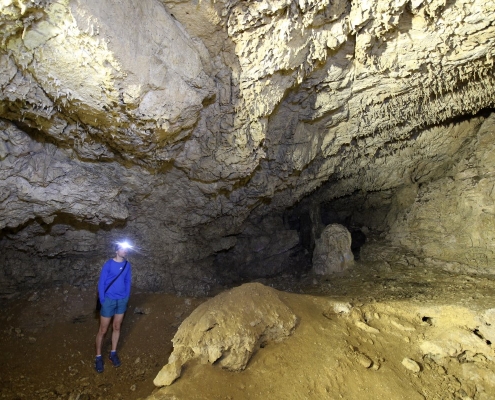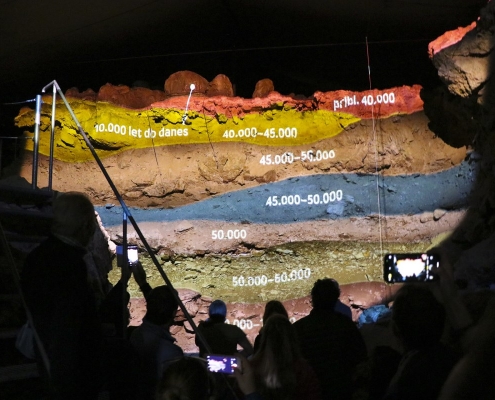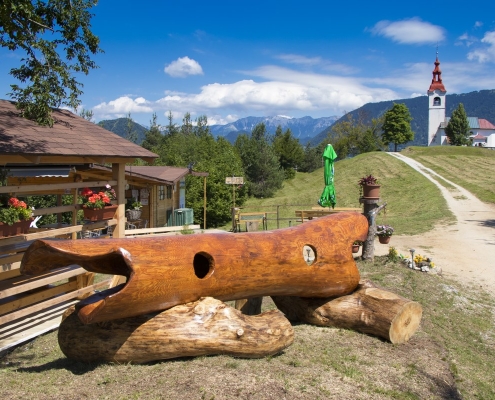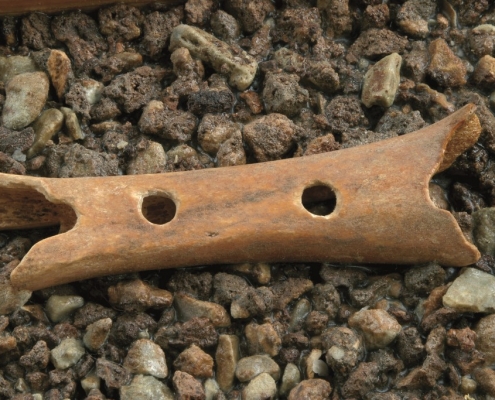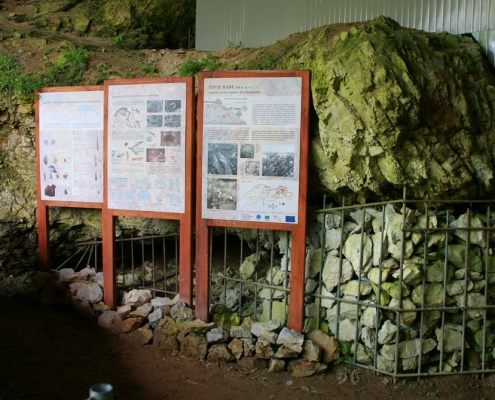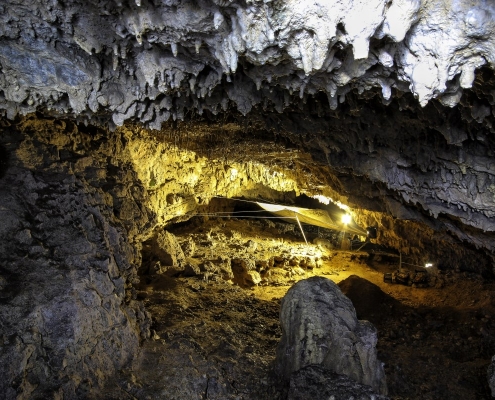Heritage / Cultural Heritage
The cradle of world music
Archaeological Park Divje Babe, which lies in the area of the Idrija and Cerkno hills, is one of the most important archaeological sites of the Early Stone Age in the world. In a steep and rocky slope, which descends from the Šebrelje plateau into the valley of the Idrijca river, lies a hidden cave. Bones from more than 60 different animal types (among which the cave bear prevails), stone and bone tools, and remains of fire pits from ice-age humans were found in the cave.
Visit the cradle of world music and learn about the first instrument in the world
Divje Babe I is an archaeological site dating back to the period of the middle (Mousterian) and early upper Paleolithic (Aurignacien). The multi-layered archaeological site has been chronologically dated using various radiometric dating methods. The age of dated layers ranges from 35,000 to 116,000 years. The youngest layers that have been researched so far and yielded Paleolithic finds were made in the age of the last Neanderthals and first anatomically modern humans.
This famous discovery happened in 1995, when during the excavations in Divje Babe I led by Ivan Turk and Janez Dirjec from the Institute of Archaeology ZRC SAZU, the world’s oldest musical instrument was discovered in the Mousterian layer. Based on the context of the find, its stratigraphic position and time frame, it could only have been made by a Neanderthal.
This unusual musical instrument, neither a flute nor a whistle, became fixed in the rocks near the remains of a 50,000–60,000-year old Neanderthal fire pit. It was made from the left thigh bone of a young cave bear into which the Neanderthal drilled four holes and made a sharpened rim for the mouthpiece using tools made of bone and stone. Using a special technique of playing this makes it possible to perform complex music. The natural shape of the chosen left thigh bone, its size, and artificial redesign are ergonomically sound and adapted for a right-handed musician. Therefore it cannot have formed randomly.
This incredible find from the Archaeological Park Divje Babe is at least 10,000 years older and is significantly more capable than all other previously known Paleolithic flutes in Europe made from bird bones by the first anatomically modern humans. That is why we cannot simply speak of a flute any longer, but rather of a musical instrument of a special kind, one which profoundly changed our views of the Neanderthal, who went extinct 30,000 years ago. This discovery is pivotal evidence that the Neanderthal was, like us, a fully developed spiritual being, capable of sublime artistic creation such as music.
Boštjan Gombač playing World’s Oldest Musical Instrument Neanderthal flute replica.
The oldest instrument in the world is kept in the National Museum of Slovenia (Narodni muzej Slovenije). More info at: www.nms.si
The bone flute is the oldest ever found musical instrument in the world, so we could also call the village of Šebrelje or the Cerkno region »the cradle of world music«.
A visit to the Archaeological Park Divje babe is possible only with a guide, by prior arrangement at least a week before the scheduled arrival.
More info at: www.divje-babe.si


